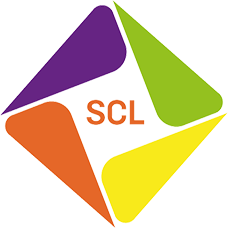Introduction
Welcome to this revised and expanded third edition, which updates the 2022 guidance
In the last edition, I referred to DLT increasingly offering opportunities to build new platforms, products and protocols, from non-fungible tokens (NFTs) and stablecoins to CBDCs and a growth in DeFi. In the past year, we've seen how DLT can be used alongside cloud computing, AI, AR, VR and IoT to build virtual reality spaces in a metaverse to enable users to engage in lifelike interactions with other users in a computer-generated environment. We've also witnessed an increasing interest in DAOs, digital securities and digital assets.
Lawyers continue to assume the role of ‘project managers’, working with various technological experts and specialists. They need to be aware not only of how network technology and other code-based technologies operate, but how these technologies impact on the wider areas of litigation, including how decentralisation and smart contracts are changing the very way financial, property and legal services are carried out. Lawyers also need to understand that the metaverse is code: ones and zeros, overlaid with vast amounts of data; a manufactured environment, in which all assets are synthetic, created and experienced from within. For this reason, the focus of this edition is on education. To this end, I am delighted to report that we have collaborated with the Society for Computers and Law (SCL) for this edition and all future editions. SCL is a registered educational charity which promotes the use and understanding of information technology in the context of the law and is celebrating its 50th anniversary this year.
To enhance your learning and content retention, several chapters have an accompanying video which are deliberately designed to enhance your knowledge, understanding and memory of the content covered within each chapter. SCL has created an instructional video which explains how to use the training platform and get your NFT.
Who wrote this guidance?
The Tech London Advocates (TLA) Blockchain Legal and Regulatory Group (the Group) was founded in 2019 by Anne Rose (Mishcon de Reya LLP) as a sub-group of TLA’s dedicated Blockchain Working Group. TLA was founded in 2013 by Russ Shaw to give an independent voice to the technology sector and comprises a network of more than 10,000 tech leaders, entrepreneurs and experts in London, across the UK and in over 50 countries worldwide.
The Group comprises lawyers and technologists from the UK's leading law firms, legal consulting firms and academic institutions, and its objectives are to: (i) assist legal practitioners when they are required to advise their clients on matters related to DLT; and (ii) identify and set out areas in which further guidance is required from regulatory authorities or other bodies. In support of these objectives, the members of the Group analyse real life use case examples of DLT. We consider a variety of technical, legal and practical issues and are supported by academics and technologists, businesses and individuals, and lawyers and non-lawyers from a number of different industries.
The 2020 guidance was informed by seminars and meetings held by the Group, including presentations by experts such as Cassius Kiani (Atlas Neue), and Professor Michael Mainelli (Z/Yen Group). For the 2022 guidance, we heard from experts including the Law Commissioner for Commercial and Common law Professor Sarah Green, and Alessandro Palombo, CEO of Jur. This year, due to a number of train strikes and our desire to do everything in person, we have not heard from any speakers. A full list of experts who have addressed and fed into the Group’s work is set out at Annex 1.
What does the guidance cover?
This guidance covers a wide range of key issues for legal practitioners to be aware of when advising on DLT-related matters. To help offer a route through this increasingly complex landscape, it is divided into two parts.
Part 1 – Developing technologies, covers the growing types and uses of DLTs and specifically cryptoassets, which will increasingly underpin advice and litigations – this includes how DLTs work, public and private blockchains, types of cryptoassets and tokens including NFTs, and social tokens.
Part 2 – Impacts on the wider landscape, covers how DLT is changing the way services including law is practiced and implications for areas of litigation: smart contracts, data and governance, blockchain consortia, data protection, intellectual property rights, dispute resolution, competition, tax, ESG and family law. We have also included a new chapter on the emergence and development of so-called decentralised autonomous organisations (DAOs). A high-level overview of DAOs is now included under this Part. We anticipate this overview will be significantly revised in the next edition follow rapid and material developments since publication.
Throughout the guidance consideration is given to the relevant regulation of cryptoassets and likely future changes both to legislation and regulations, as well as making recommendations where further guidance is required from regulatory authorities or other bodies.



